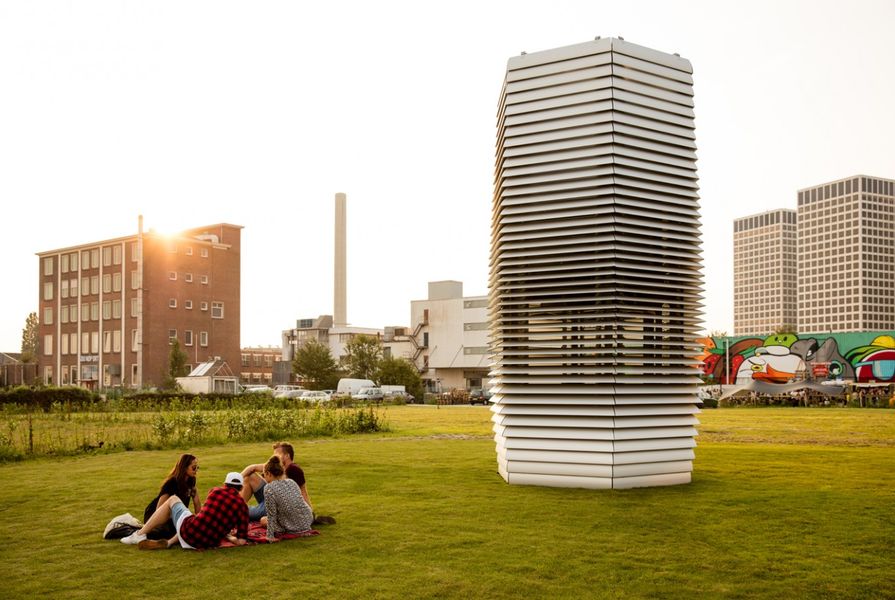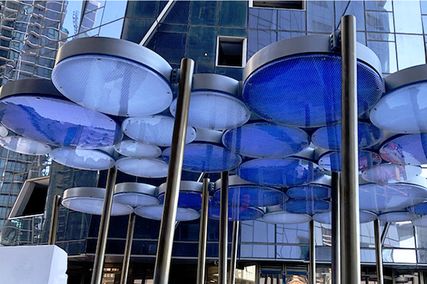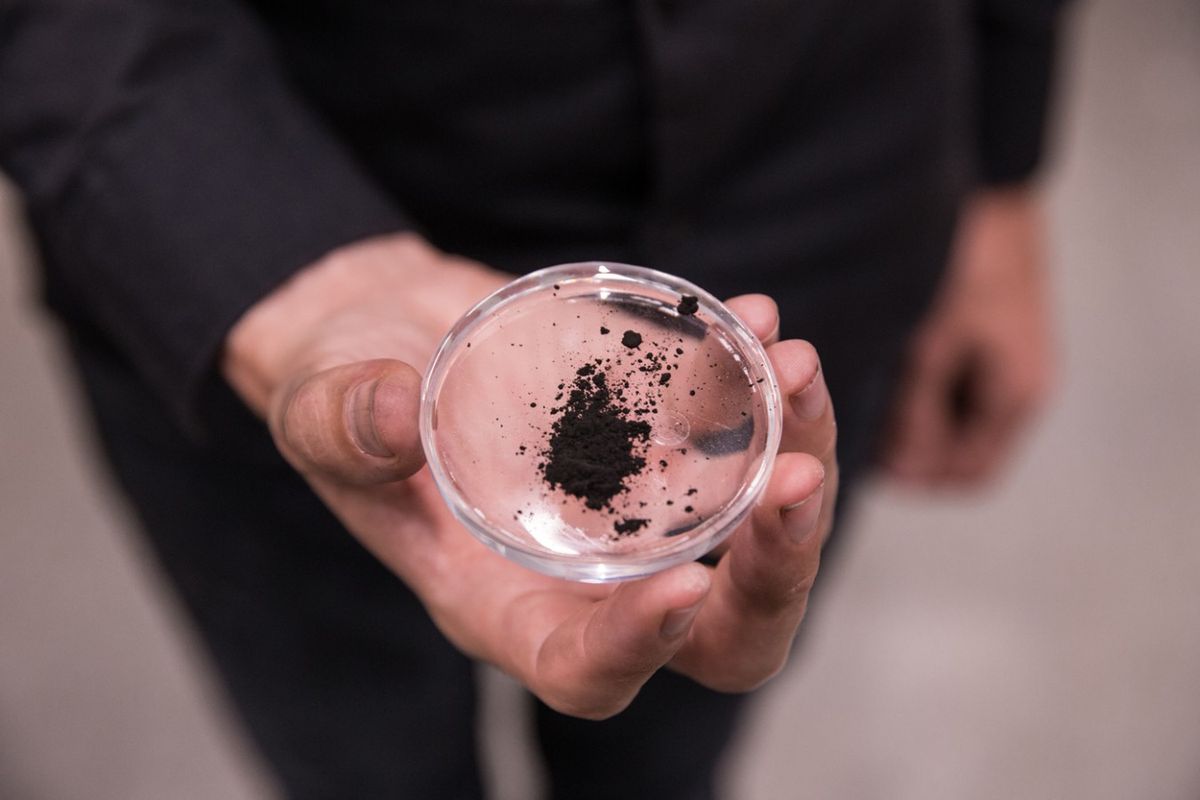The world’s first smog-fighting urban sculpture has been constructed in the Dutch city of Rotterdam with the ability to suck in polluted air, remove particles and blow out fresh air through a series of vents. The smog particles collected through the process are being turned into pieces of jewellery.
The seven metre structure acts as a giant vacuum cleaner by sucking in smog, collecting particles using ion technology and then returning fresh air to its surrounds. The entire system is run on renewable wind power, and can clean 30,000 cubic metres of air per hour.
Dutch practice Studio Roosegaarde led by artist Daan Roosegaarde started the Smog Free Project using crowdfunding, with 1,577 people pledging €113,153 (AUD$177,910) to build the first working prototype. The structure is moveable, and the practice hopes to tour the project internationally in places such as Mumbai and Beijing.
“I believe we should do more, not less, and make modern cities liveable again,” said Roosegaarde.
The practice’s website describes the process as the creation of “smog-free bubbles of public space, allowing people to breathe and experience clean air for free.”
“The Smog Free Project is not only intended to be a final local solution, but also a sensory experience of a clean future. Along with governments, NGOs and the clean-tech industry, people can become here part of the solution instead of the problem.”
The smog particles collected by the tower are being compressed and turned into rings and cufflinks for people to purchase. Each piece of jewellery will represent 1000 cubic metres of clean air returned to the city.
Air pollution is a significant problem globally, with a 2014 report from the Organisation for Economic Co-operation and Development (OECD) finding that over three million deaths each year are caused by outdoor air pollution, with many of the deaths occurring in countries that are rapidly developing. Coupled with this, the UN predicts that a further 2.5 billion people will live in urban areas by 2050.
The practice said that the Rotterdam prototype will serve as a pilot to be followed by similar air purifying structures to be set up in cities such as Beijing, Paris, Mexico City and Los Angeles.
Canadian researchers recently found that surface grime caused by air pollution actively releases harmful compounds when exposed to sunlight, contradicting previous understanding of its contribution to urban smog.




















